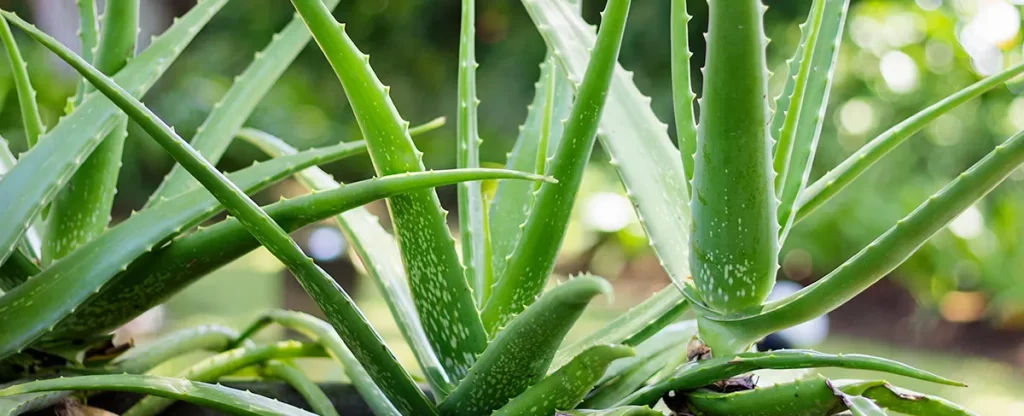Sometimes we don’t have the time that we would like to dedicate to caring for our plants or it is simply something we don’t enjoy doing, even though we’re fascinated by how they look and the joy they bring. The good news is that it’s not necessary to make life complicated in order to have a house full of greenery. The trick is to know how to choose plants that are more resistant and, therefore, very low maintenance.
We’ve prepared a list of five low-maintenance plants for your home, so that you can (easily) get to work.
1. Sedum rubrotinctum

Succulent plants are a family that includes many species. They are very popular at the moment, and this is because they hardly need any water, as they accumulate it in their stems, leaves, and roots. They require very little care. You’ll be sure to find some in your local nursery.
Succulents are easy to care for and have a particular shape. But of all the types that exist, there is a group that is distinguished by a special characteristic: they have the ability to change color. Within this group is the Sedum rubrotinctum.
This unique plant is native to Mexico, although it can also be found in other parts of Latin America and in Spain. It’s also known as “God’s hand” due to its small, rounded leaves that resemble the fingers of a hand. Other names include “the jelly bean plant” and “jelly-beans”.
As previously mentioned, its main characteristic is that it can change the color of its leaves from green to certain shades of red, orange, and yellow. This is due to photosynthesis, during which it absorbs water and carbon dioxide that it converts to glucose and oxygen. The change in hue depends on the amount and intensity of light it receives.
2. Air plants

Air carnations or air plants are perhaps some of the least demanding plants of all. And they are so called because they don’t need soil to grow. These wonders can live peacefully sharing your own spaces, like bedrooms and bathrooms. Air plants also do a great job of purifying the air, which makes them an excellent option as ornamental plants, since they also transform a room into a resting space. They only need to be immersed in water for two hours every 10 days.
3. Mother-in-law’s Tongue

The Sansevieria trifasciata plant, more commonly known as mother-in-law’s tongue, is one of the strongest plants you can find. It can tolerate heat, dryness, even insects. It has long, light green leaves that can vary in shades and patterns, a yellow edge lining its leaves. They do very well in indirect sunlight and require much less water than you might think. It is recommended that they be watered once every 10 days.
And what is the mother-in-law’s tongue for?
- NASA considers it an oxygen purifier, since it absorbs toxins such as nitrogen oxide, benzene, formaldehyde, xylene, and trichlorethylene.
- Feng shui says that this plant has the ability to attract good energy.
- Others claim it possesses healing properties and that infusions made from this plant work as detoxifiers, help lower glucose and cholesterol levels, prevent diabetes, relieve internal pain, reduce inflammation, and fight colds and the flu.
- Some say that the steam inhaled when boiling this plant in water cleanses the lungs and opens the bronchial tubes, thus improving breathing.
4. Brazilwood

A species native to the country of Brazil, as its name indicates. Its leaves are an intense green combined with another, more pale green that unfolds in the center of each. Its trunk is robust, and its bark has a showy texture. If you place it where it gets plenty of light, it will absolutely grow very fast and bushy, but you should be very careful about exposing it to direct sunlight. We advise you not to water your Brazilwood excessively. Once a week or even every 10-12 days is more than enough, and that’s if the weather is very hot.
5. Aloe vera

Aloe vera is one of the best-known succulent plants in the world. It’s very easy to care for, beautiful, and everyone knows about its immense healing properties. The Aloe plant is naturally soothes burns and skin irritations, as well as the discomfort of gastritis. Aloe vera thrives in indirect light, although it can also be an outdoor plant and tolerates full sunlight very well. A good idea is to have it as a doorway plant at the entrance to your house. Its long, pointed deep-green leaves will develop perfectly there. Indoors, you can place small to medium Aloe vera plants on nightstands, desks, mantelpieces, or projecting walls. Water it abundantly every three weeks.
That concludes our list of five low-maintenance plants. If you would like to see other options for strong plants that need minimal care, take a look at our articles “Pothos: basic care for spectacular décor” and “Ficus pandurata: Learn how care for this treasured indoor tree.”





